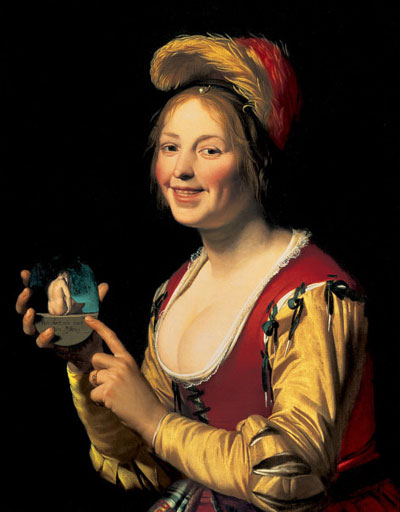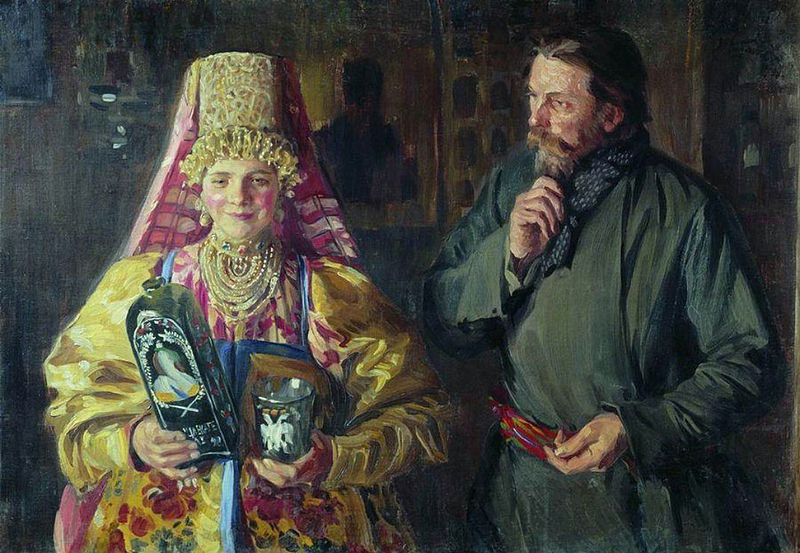In some cases, the sufferer’s cheeks, ears, or neck grow red. Other people’s entire faces burn, or the heat washes over their head like a wave. A person who blushes feels stripped bare, even when fully clothed. A blush can be triggered by shame, guilt, joy, excitement, or irritation, and can strike when we are alone or in the company of others. But it is never under our control. It can happen when we are praised, criticized, or caught off guard. A blush can be a sign of attraction or of “hot” thoughts. Or a person may blush because she realizes she is unprepared for an important discussion or presentation – or at least feels that way. Sometimes it’s enough to drive you crazy, but blushing also has a positive side.
Blushing is just one possible reaction to feelings of shame, which in turn arise under very different circumstances in different people. Some people never blush in embarrassing situations: instead, they may grin, laugh, or involuntarily alter the timbre of their voices. “Social” blushing is also distinct from hot flashes, stage fright, skin diseases, or the reddening of the skin as a result of physical effort, happiness, or alcohol consumption.
People who blush can be found at every economic and social level, but its widespread prevalence does not make this complex phenomenon any easier to understand or control. Even royal blood is no protection against a red face, despite the emphasis on poise and self-confidence in aristocratic circles. Prince Charles, heir to the British throne, is famous for more than his charmingly prominent ears: the frequency with which a layer of red washes over his distinguished English pallor has made him one of the best known male blushers around. In a memorable incident some years ago, Geri Halliwell – better known as “Ginger Spice” – left the prince’s cheeks burning when she kissed him and pinched his bottom in front of hundreds of camera teams. Instead of counting against him, however, his blushing tendencies generally make him more likable. In any case, people tend to cut him a lot of slack. Perhaps the beard he sported in the 1970s was an attempt to distract everyone from his all-too-expressive complexion.
Charles Darwin described blushing as “the most peculiar and most human of all expressions,” adding that it “makes the blusher to suffer and the beholder uncomfortable, without being of the least service to either of them.” In fact, blushing is the only facial expression that humans do not share with other primates. This fact raises the interesting question of why only humans developed this ability, but the father of evolutionary theory had no answer to give. In an essay written in 1897, Wladimir M. Bechterew, a Russian behavioral scientist, used the word “erythrophobia” to indicate the fear of blushing – and kicked off a relentless movement to pathologize the reflexive red glow. For Sigmund Freud, blushing was a result of our expulsion from the paradise of shame-free existence. He saw it as a visual mating call signaling our arousal to those around us – a foretaste of intercourse, if you will. Other psychoanalysts came up with explanations of the phenomenon that, at the very least, demonstrated their own lively imaginations: among the tamest ideas were claims that feelings of shame were rooted in “mysteries of life” such as impotence or homosexuality, or represented a repressed erection. Ernst Bien, a Viennese psychologist, believed that blushing was a way for some of his male patients to “neurotically” experience menstruation. He offers this startling theory in his 1930 treatise “The Fear of Blushing,” which also links red cheeks to necrophilia or repressed cannibalism.

Gerard van Honthorst (1590–1656). Via Wikimedia Commons.
Blushing no longer inspires such drastic judgments, but its significance remains mysterious and even contradictory. What actually happens when someone blushes, physically speaking? At the command of the sympathetic nervous system, the blood vessels suddenly enlarge. The person affected often senses this reaction as “heat,” although the change in temperature is minimal. The resulting blush is most evident in the face, in part because the blood vessels there are especially close to the skin’s surface. The blood pressure and heart rate increase, and the stress hormone adrenaline floods the body.
No one knows exactly what causes the blood vessels to expand. But one thing is certain: since the signals come from the autonomic nervous system, we are unable to consciously control them. As a result, it’s not possible to fake a blush. Prince Charles aside, men generally appear to blush less than women do because their facial skin is thicker. However, dealing with blushing can be more difficult for men because society is less forgiving when they seem vulnerable and they face more pressure to have their feelings under control.
Although blushing is perfectly normal and affects many people, it can develop into a problem if it starts to feed on itself and becomes compulsive. Those afflicted are unable to concentrate: their thoughts revolve around their red faces and whether other people see them as strange, weak, or uncertain. In the worst case, someone actually comments on their blushing, points at them, or even laughs.
Sufferers end up trapped in a vicious circle of self-fulfilling prophecy. The fear of blushing leads them to avoid situations that might trigger the hated reaction. Many become isolated or choose professions that don’t require them to interact with other people. People with especially severe blushing phobias take tranquilizers or beta blockers, smear thick creams on their skin, frequently cool their faces with water, or drink red wine in social situations to create an “excuse” for their heightened complexions. Corine Dijk and Peter J. de Jong of the University of Amsterdam estimate that about 4 percent of the population develops some fear of blushing at some point during their lives.
What actually triggers the whole red-faced drama is still a matter of debate. Mark R. Leary, an American neuroscientist at Duke University, does not think that blushing is necessarily a sign of a guilty conscience. Instead, he explains, “It tends to be due to embarrassment. But the more broad reason is that people blush when they receive undesired social attention.” Surprisingly, it doesn’t matter whether this attention is positive or negative. Anyone who finds himself in the spotlight and realizes he is being observed can feel the blood rushing to their face, Leary says, but the result will be more visible in fair-skinned people.

Other researchers consider a different explanation to be more plausible: they believe that blushes signal and attempt to mitigate the crossing of certain social boundaries. In this theory, people who blush are admitting that they know they’ve gone too far and are seeking forgiveness. In one study, the Dutch scientists Dijk and de Jong showed test subjects photos of people, some of whom were blushing and some of whom were not. The study participants also heard reports about these people’s supposed wrongdoings and mishaps – things like stealing underwear, intentionally passing gas in an elevator, or walking into shelf of perfume bottles. The results revealed that the test subjects tended to have a far better impression of the people who appeared to be blushing, seeing them as more trustworthy and likable. Apparently they had more understanding for missteps if the flush of the guilty party’s face suggested genuine shame. The fact that the photographed faces were artificially reddened did not apparently make much of a difference. Seeing red was what mattered.
But Samia Härtling, who investigates blushing at the Institute for Clinical Psychology and Psychotherapy at Germany’s Technical University Dresden, doubts whether blushing really serves such a fundamental social function. “All these approaches raise the question of whether they make sense at all in terms of evolutionary history, given that prehistoric humans were dark-skinned, which would have made blushing difficult to see,” she says.
Those who suffer from a severe fear of blushing can at least learn how to deal differently with the behavior, even if they can’t stop it doing it. In one therapeutic approach, for example, patients use a camera to see how they react when they feel their faces turning red. Some are surprised to realize that their blushing is not nearly as obvious as they think it is. Other therapists swear by relaxation exercises.
If a patient’s blushing troubles him deeply enough, he can even opt for surgery. In this procedure, two cords of sympathetic nerves in the upper body are severed or clamped to prevent the blood vessels from flooding. Today, this operation is minimally invasive and can be completed on a fully anesthetized patient in about half an hour. However, it is not a step to be taken lightly: a common side effect is excessive sweating on the torso, legs, and face. Critics of the approach therefore recommend exhausting all the psychotherapeutic options before turning to such a drastic solution. In 2001, author Atul Gawande wrote an extensive account of this surgical method for the New Yorker (“Crimson Tide”) – and almost certainly increased a number of surgeons’ caseloads.

Despite the negative associations blushing conjures up, there’s still something ambivalent about it. The literature of the 19th century is full of young ladies whose faces glow with shame in response to inappropriate comments or acts. Alongside fainting or growing pale when frightened, blushing — another involuntary affective symptom – is a sign of propriety and morals, shyness and modesty, and awareness of when the rules of etiquette have been broken. In this sense, its connotations are positive.
In today’s world – where so much that was once unthinkable is now permissible and so many limits on behavior have been lifted – is it possible to radically rethink blushing? Can we understand it in an affirming way and thus remove the stigma from those who are prone to it? After all, it’s not unusual today for people to seem more likable when they don’t completely cool maintain their cool in certain situations. Flaming cheeks can make someone attractive because they can be a sign of attention or even sexual arousal – the so-called sex flush. As a result, a healthy glow can be a plus when flirting; no wonder so many women swear by the cosmetic variety of blush. Rumor has it that Diana Vreeland, Vogue’s legendary editor in chief, even applied it to her earlobes. And it’s probably no accident that a Berlin underwear manufacturer called Blush Lingerie attracts customers with the slogan “blush like you never have before.” While the tagline is catchy, it’s also somewhat surprising, since the company’s products – which are designed by women and for women – are clearly intended to make the wearer feel sexy, glamorous, free, and confident.
People who blush visibly demonstrate that the world around them does not leave them cold. They reveal themselves as impressionable and sensitive, and perhaps even especially excitable or vulnerable. Someone blushing is acutely aware of how others perceive him in the moment. And that can be oddly appealing. Blushing can be a sign of a special sensibility – a highly developed awareness for the rules and boundaries that apply in a particular situation. For the person who experiences it, the act of blushing can be a clue to personal preoccupations. Seen in this way it functions a little bit like a dream, and there’s nothing negative about that. So let’s enjoy the deeply human luxury of red ears and passionately burning cheeks. •
Lead image modified from Diane chasseresse by Jean Ranc via Wikimedia Commons.




